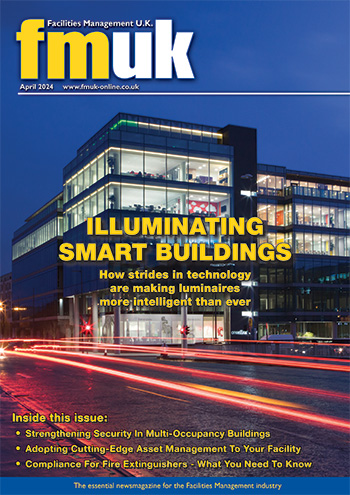Can Smart Lighting Help Reduce Energy Use?
 Never before has the issue of climate change been more prominent. As the effects of global warming continue to wreak havoc on the world and in the aftermath of the recent COP26 climate summit, the focus on reducing carbon emissions and energy use is at an all-time high. Here Rachel Morris, Marketing Manager for OCTO, at Ansell Lighting looks at how Facilities Managers can implement smart lighting systems to help reduce energy use.
Never before has the issue of climate change been more prominent. As the effects of global warming continue to wreak havoc on the world and in the aftermath of the recent COP26 climate summit, the focus on reducing carbon emissions and energy use is at an all-time high. Here Rachel Morris, Marketing Manager for OCTO, at Ansell Lighting looks at how Facilities Managers can implement smart lighting systems to help reduce energy use.
For facilities managers, decisions made at work can have a real impact on energy use and on climate change as a whole. According to Project Drawdown, buildings account for 32 per cent of energy use worldwide, with as much as 80% of the energy consumed being wasted by lights and electronics being left on and gaps in the building’s envelope allowing air to seep in and out.
From taking steps such as replacing doors and windows to ensuring that energy-using equipment is regularly checked for leaks, there are a variety of measures that facilities managers can consider when embarking on an energy use reduction programme – including upgrading lighting.
Lighting accounts for almost 5% of global CO2 emissions and 40% of all energy used in commercial buildings in the UK– some of which will be wasted so it is an area where real savings can be achieved.
Calculations from The Climate Group estimate that simply switching existing bulbs and luminaires to LEDs could save more than 1,400 million tons of CO2 globally. A huge saving which can be accelerated further when combined with a smart lighting system.
Smart lighting is automated and designed to ensure that it is only used where and when it is needed, eliminating reliance on human intervention and reducing the risk of users accidentally leaving the lights on and wasting energy. It not only offers complete control over when lights are in operation, but also over output levels and colour temperatures, all of which impact energy use. It can be installed in almost all indoor and outdoor settings, from commercial buildings to factories, car parks and schools.
As with all technologies, there are many options offering different levels of automation to consider. For a fully connected building, products embedded with connected technology which can be operated via Wi-Fi and Bluetooth, are a must. This technology enables numerous luminaires to be linked together and controlled, creating different scenes, groups and schedules. It can be pre-programmed to operate at specific times, activated remotely, programmed to respond to voice or motion or even integrated with eco systems such as Alexa, Hey Google and Siri.
There are many smart lighting products to consider which regulate energy use by controlling natural light.
Daylight harvesting systems offset natural daylight against electric lighting to achieve targeted levels of illumination, reducing the need for electric lighting during periods of high-level daylight and energy use.
Where light is required over longer periods, in settings such as public buildings, schools or hospitals, smart products with corridor functionality are another great product that reduce energy consumption. They only operate at 100% output when presence is detected avoiding energy waste when the space is unused. Similarly intuitive motion sensors, and presence and absence detection lighting can be used to control lighting, turning lights off when spaces are unoccupied. The Carbon Trust estimates that automatic sensors alone can cut energy usage for lighting by up to 40%.
What should be even more appealing to many facilities managers is the ease with which smart lighting can be installed. Simple to set up via Bluetooth and Wi-Fi, systems are controlled and hosted on the cloud, so there is no hub or wiring required and most units are simply installed like a lamp or switch.
In essence, smart lighting systems can deliver lower energy use, reduced carbon footprint and quantifiable cost benefits for clients, so should be considered for any new build or refurb project.
























































